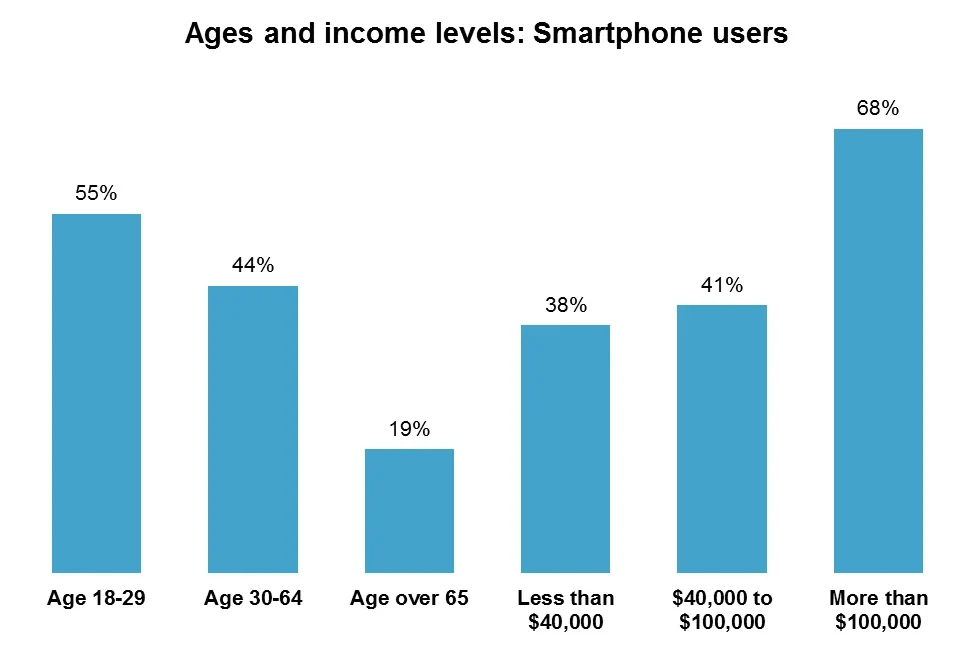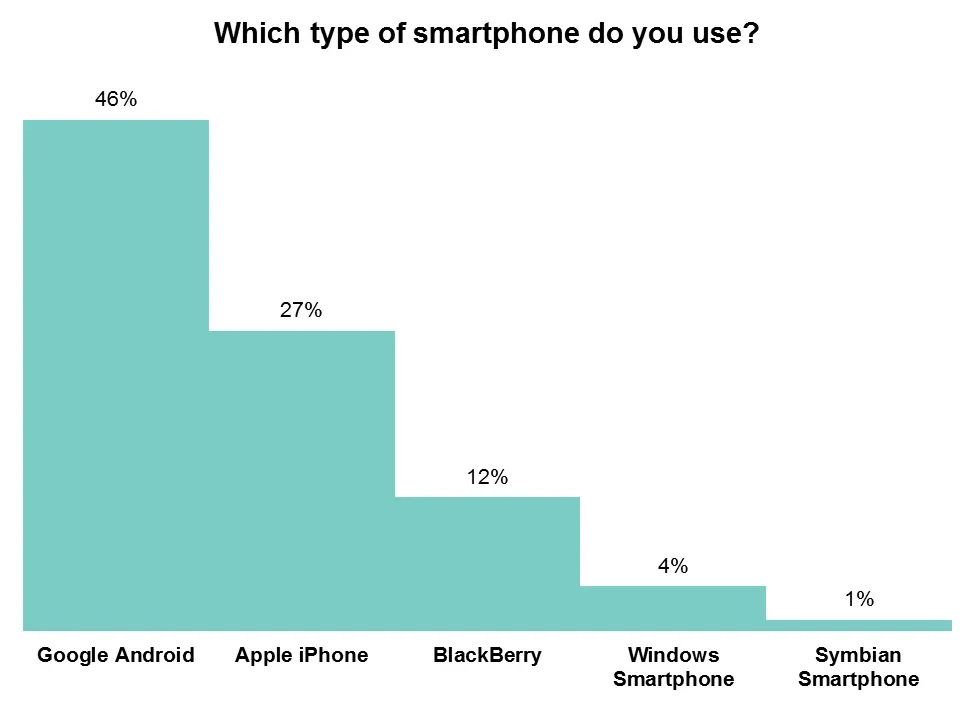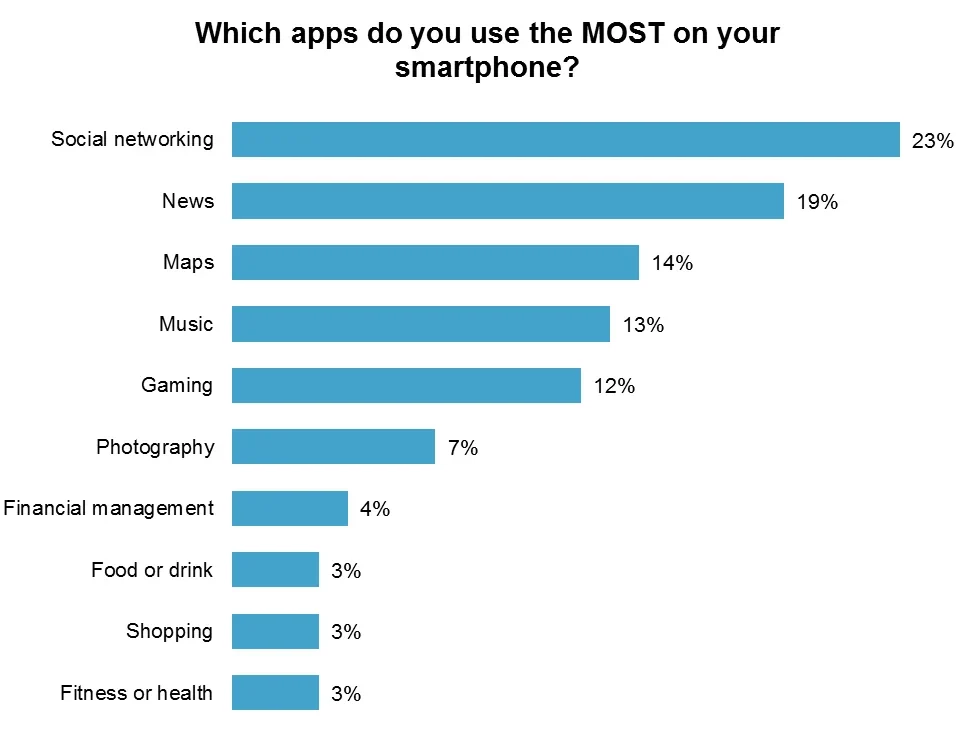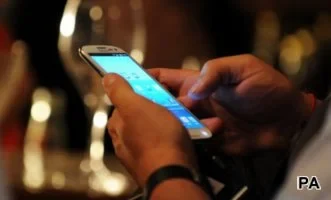Just 20 years ago, a portable phone the size of a brick was considered the height of technology. Now even the most adventurous of smartphone apps struggle to raise eyebrows in the technology world.
That’s because almost half of US mobile owners now use smartphones (48%). Technological features that used to be the preserve of a business niche – mobile internet, email and applications – have now become the norm. This transformation in the mobile industry has been revealed in a YouGov survey into smartphone use, which asked a nationally-representative panel of respondents whether they use smartphones, which devices they use the most, and which applications are most popular.
- 48% of mobile users own a smartphone
- Smartphones more common among young adults and higher earners
- Google Android most popular for 46% of respondents
- 27% say the Apple iPhone is their favored device
- Most used apps are social networking (23%), news (19%) and maps (14%)
- 12% spend more than 3 hours a day on their smartphone
- 27% spend less than an hour per day using their smartphone
Most young adults use a smartphone – 55% of 18 to 29 year-olds – compared with only 19% of over 65s. The data suggests that income acts as a barrier to smartphone ownership, as 38% of consumers earning less than $40,000 use a smartphone device but 68% of those earning more than $100,000 use one.

The smartphone market has become flooded with devices claiming to be the next best thing. In the highly competitive market for mobile operating systems, Android comes out top. 46% of smartphone owners say they use a phone with Google Android capabilities, which is used by Samsung Galaxy, HTC, LG, Motorola and Sony devices.
Apple’s iPhone is the device of choice for 27% of smartphone users, while RIM still commands a significant share as 12% said a BlackBerry is their primary phone. What’s interesting is that Windows phones have a small share (4%) of the smartphone market – but this could be because these devices (like new Nokia models) are still relatively new and gaining ground. But Nokia’s overall mobile market share stands at 6%, according to YouGov InvestorView, indicating that the brand is also popular with non-smartphone users.

The most popular smartphone application is social networking (23%) followed by news apps (19%) and maps (14%). YouGov asked the panel members who had responded that they own a smartphone to pick three of the apps that they use the most on their devices. The top app list suggests that most people are using their smartphones for fun – social networking, gaming, music, photography and shopping all rated highly. A small proportion of smartphone users (4%) answered they use financial management apps the most, indicating that people may be reluctant to access their bank from their phones.

Almost half of Americans are kept up to date with email, social networking and online information while on the move thanks to the use of a smartphone. But how long do smartphone users actually spend tapping away each day? The biggest group of respondents (27%) said they spend less than an hour a day using a smartphone, but 22% of smartphone users spend more than 2 hours using their gadgets every day. Younger smartphone users are more prone to stare at their screens for longer. 27% of 18-29 year-olds said they spend more than 3 hours a day using a smartphone, compared with 9% of 30-64 year-olds and 2% of over-65s.

These results come as doctors have warned smartphone users may be risking their health with the overuse of devices. The gadgets might be useful to get work done during the commute, keep up to date with friends or burn some time if you’re waiting on the go – but poor posture in these environments can lead to neck and back pain. Also, having extra screen time could be a source of extra workload and stress for people who use their smartphones for the office. But the respondents show that most smartphone users are limiting their screen time to no more than a few hours a day.
The smartphone industry is cut-throat for the brands involved, with many manufacturers fighting for a strong market share. And as smartphone sales grow, so will the normalcy of owning what was once considered an elite mobile gadget.








